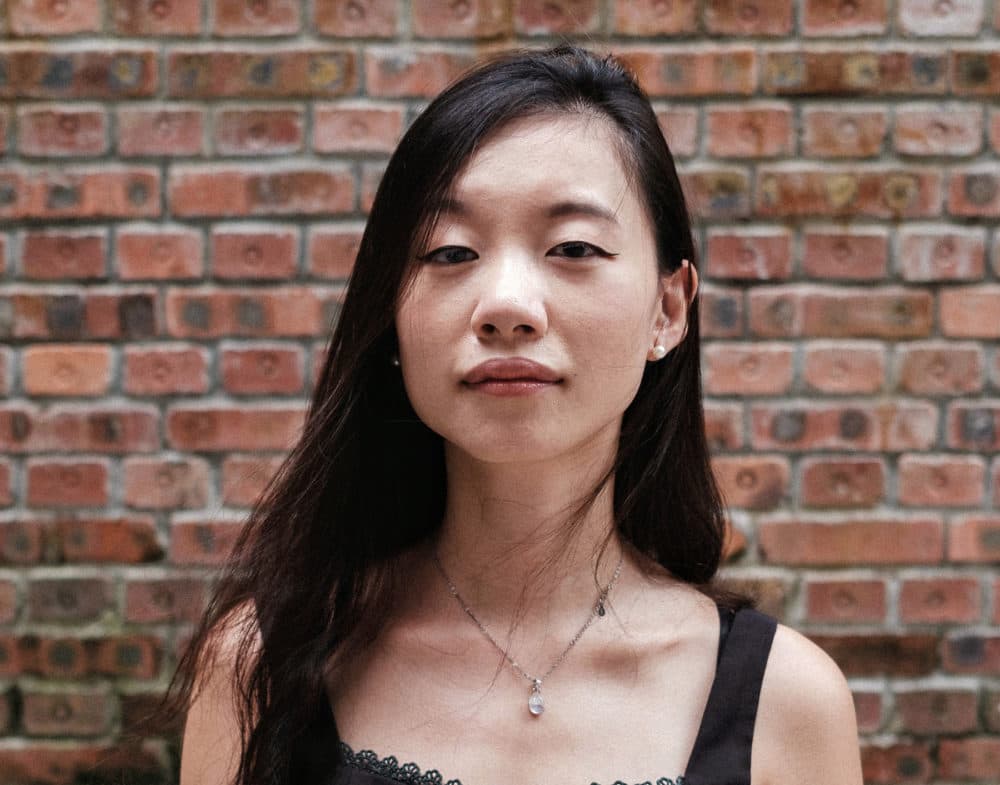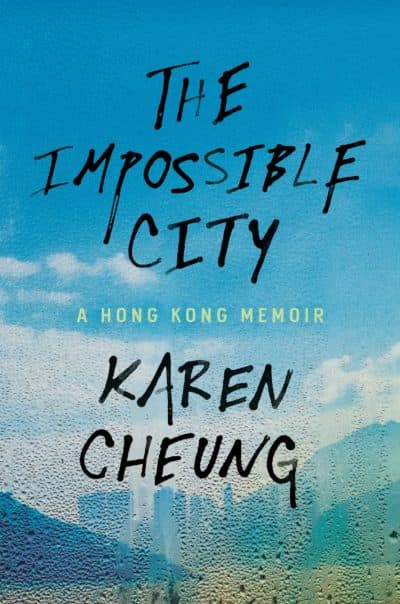Advertisement
Journalist Karen Cheung reflects on turmoil, pop culture in Hong Kong memoir 'The Impossible City'

Editor's note: This segment was rebroadcast on Aug. 23, 2022. Click here for that audio.
Here & Now's Scott Tong speaks with journalist Karen Cheung about her new book "The Impossible City: A Hong Kong Memoir."
She reflects on growing up in Hong Kong following the handover from Britain in 1997 and covering the turmoil following protests against the Chinese government in 2014 and 2019.
Book excerpt: 'The Impossible City'
If all of Hong Kong is to be razed to the ground and I could save but one place, it would be Western District. Sai Wan 西環, as it is also known as, is on the western shore of Hong Kong Island, between the dried seafood stores of Sheung Wan and the hilly terrains of Mount Davis, and down the slope from the University of Hong Kong where I read law and literature. That strip of salt-drenched promenade is called the praya, and in my undergrad years exchange students and I would head down to watch the sea batter the shore during typhoons. I often tell people that I grew up in Sai Wan, even though I only moved there when I was eighteen. I grew up there because it was the first place in Hong Kong whose stories I wanted to learn, and where I had the freedom to make my own stories. Away from the shadow of my stifling family, I finally felt like I had control over the trajectory of my life.

In Western District, I found a home in my roommates who shared bunk beds with me in tiny flats, the lady at the laundromat who reminisced about Beatlesmania in Hong Kong, the diner that always leaves me an extra bowl of soup, the fellow residents cracked open beers and booed the Chinese national anthem during a Hong Kong versus China football match, the dog owners at the pier I saw every night. On weekday mornings at the cargo dock, ships unload their freight and trucks drive in to tow the goods away, but from late afternoon the technically-off bounds pier transformed into a utopian space where all the suffocating rules governing publicness in Hong Kong no longer applied. It is one of the few waterfronts in the city not bounded by railings, no security guards to pull back anyone who just wanted to see the sea. Residents rode their bikes, smoked weed next to ship containers graffitied with obscenities, and cast their fishing rods into the water. We let our dogs off the leash.
Hong Kongers will tell you that it’s boring to love Western District. There is little unexplored terrain left in the area, few new places to discover. 西環 is one of the oldest districts in Hong Kong. Sai Ying Pun literally means western encampment because British troops were stationed here after the Japanese occupation. Kennedy Town was named after the governor Sir Arthur E. Kennedy, and Shek Tong Tsui was once renowned for its brothels. If you’re walking home late at night down Hill Road, you might see an apparition of Anita Mui in a cheongsam, still waiting for Leslie Cheung to meet her in the afterlife. But I don’t care that people already know the stories of Western District. They don’t know mine. About the time I got pepper sprayed outside the China Liaison Office, this barricaded building with the wavering five-star flag, housing the top Chinese officials that are in charge of this place. They’ve never been inside No 1 High Street, the outpatient psychiatric clinic that has been doling out antidepressants and sleeping pills to me for the past half-decade.
Advertisement
The residents of Western District gave me a community and in return, I promised to write its stories. When I worked as a local reporter, I began anxiously documenting the changes in Western District. The train line extended to Western District in early 2016, and by 2020 西環 no longer looks like the neighborhood of my early adult years. The auto-repair shops streaked with grease, grocers with bags of chips dangling from a rod, and stores selling red-capped jars of fermented sauces have been replaced by glossy cafes with white minimalist décor. Bars and bougie restaurants moved in along with the expats, multiplying the late night noise complaints in the district and hastening the gentrification. The government dropped hints that it might close the cargo pier off to the public.
Three months after the national security law in Hong Kong came into effect, my partner and I went to the pier on a blazing Saturday afternoon to take wedding photographs. I wore a cheap white dress and combat boots. My partner wore a navy suit that came from a pro-protest tailor. The breeze tousled my hair. We struck ridiculous poses before mustard-colored shipping containers, dancing and wagging our fingers and emulating our favorite Telegram stickers. It was unbearably cheesy. This was where we had our first kiss four years ago. In the photographs, the skyline floats above the water against a background of gradient blue, hazy like a mirage. Everyone’s been getting married lately, because marriage guarantees dependency visas in foreign countries and visitation rights in jail. These are strange, difficult times.
Whenever I’m at my pier, I don’t see a city always on the cusp of death, only the place I know and grew up in. I thought about how I wanted to map out the city on my own terms, and to write about my districts, my streets, my buildings. A narrative that was adjacent to the political developments that defined Hong Kong. I loved 西環 before I learned to love Hong Kong, learned that you could love a place so desperately, you would do anything to save it even when you no longer recognize it.
Excerpted from "The Impossible City: A Hong Kong Memoir" by Karen Cheung. Copyright © 2022 by Karen Cheung. Republished with permission of Penguin Random House.
This segment aired on February 15, 2022.